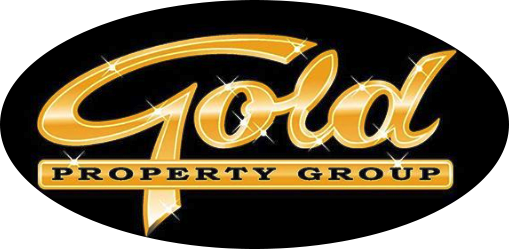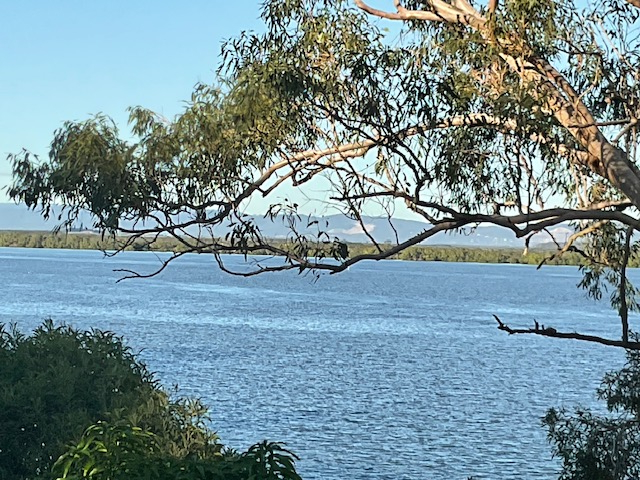MORETON BAY REGION
The Moreton Bay Regional Council area spanning 2,037 square kilometres offers diverse lifestyle opportunities. These opportunities are provided by the bayside communities of Redcliffe and Bribie Island in the east, the suburban neighbourhoods extending from between 10 kilometres to 57 kilometres north of the Brisbane CBD alongside major north-south road and rail corridors and the rural townships and rural areas in the west.
The estimated resident population in the Moreton Bay area in 2016 was 438,000 persons, the third largest local government population in Queensland and Australia (following Brisbane and the Gold Coast). The region is also one of the fastest growing areas in Queensland. Between 30 June 2006 and 30 June 2016, the average annual growth rate was 2.8 per cent, compared with 1.9 per cent in Queensland as a whole. The population is currently projected to increase significantly by 2036 to 618,394 persons.
The Kabi indigenous people are the traditional custodians of the area now known as Caboolture. The name Kabultur is derived from the Yugarabul dialect meaning “place of the carpet snake”. The Kabi people harvested bush food, fresh water mussels, oysters, fish, and some game animals, moving around the land to take best advantage of seasonally-available produce.
The Caboolture area was colonised by European people in 1842 when the land around the Moreton Bay penal colony was opened up to free settlers.
By the mid-1860s the local pastoralists were experimenting with sugar cane and cotton. In 1867, a tiny settlement was established as a supply and trading centre for the settlers in the area and to service the needs of miners trekking from Brisbane to the goldfields near Gympie The local shire was constituted in 1879 and in 1888 the railway line from Brisbane was opened. Caboolture Post Office opened on 1 September 1869.
Settlement in Caboolture was accelerated with the discovery of gold at Gympie. In 1868, the town was used as a stop-over point by the Cobb and Co coach service connecting Brisbane, Gympie and Maryborough. This function continued with the rail link established in 1888
Formerly a small dairy town, the location of Caboolture on the corridor between Brisbane and the Sunshine Coast resulted in an influx of residents in the 1970s and 1980s. The three main factors in this expansion were the electrification of the railway line to Brisbane, enabling travel to the Brisbane CBD in less than an hour, the development of the Bruce Highway to freeway (motorway) standard, and the availability of cheap land.
Caboolture is a regional transport hub. With its connections across the Great Dividing Range via the D’Aguilar Highway, easy highway access to Brisbane and the Sunshine Coast via the Bruce Highway, and the Bribie Island Road to Bribie Island, it is a focal point for road traffic.
Caboolture railway station is the terminus for QR Citytrain’s Caboolture railway line, as well as being a major stop on the North Coast railway line. Citytrain operates regular services to Brisbane, in addition to interurban services to Nambour and Gympie, with significant expansion of services north of Caboolture planned over the next decade. The area is serviced by two bus companies, Caboolture Bus Lines and the larger Kangaroo Bus Lines.
Caboolture also contains its own airfield, which primarily services general and recreational aviation. Visiting aircraft are able to operate into the Caboolture airstrip, which is under the operational control of the Caboolture Aero Club Inc.
CABOOLTURE NORTH TO GLASSHOUSE
From Caboolture, follow the Bruce Highway north, take the Glass House Mountains tourist drive turn-off and follow the signs to the Glass House Mountains.
The volcanic peaks of the Glass House Mountains rise dramatically from the surrounding Sunshine Coast landscape. The Glass House Mountains were named by Lieutenant James Cook in 1770. The following extract from Cook’s journal on Thursday, 17 May 1770 noted:
‘These hills lie but a little way inland and not far from each other, they are very remarkable on account of their singular form of elevation, which very much resemble glass houses which occasioned my giving them that name…’
Glass House Mountains National Park contains a wide variety of terrain such as rocky peaks and pavements, steep hill slopes, gullies and swampy coastal plains which provides habitat for many different vegetation communities.
The peaks themselves protect montane heath, an uncommon community on the Queensland coast, while heathlands, forest and woodlands are found across the surrounding hills and plains.
This area is home to koalas, goannas, echidnas and grey kangaroos. Many birds such as kookaburras, cockatoos, lorikeets, rosellas and peregrine falcons can also be seen. The glossy black-cockatoo, which is considered vulnerable to extinction, is found in the Glass House Mountains
The Glass House Mountains are intrusive plugs—remnants of volcanic activity that occurred approximately 25–27 million years ago. Millions of years of erosion have removed the surrounding exteriors of the volcanic cones and softer sandstone rocks leaving the magnificent landscape features you see today.
As the volcanic mountains cooled, interesting vertical columns formed and this feature can be seen today at Mount Beerwah, Mount Ngungun and Mount Coonowrin.
The Glass House Mountains area was a special meeting place where many Aboriginal people gathered for ceremonies and trading. This place is considered spiritually significant with many ceremonial sites still present and protected today.
The bush here sustained people for thousands of years. The Glass House Mountains area provided many resources from a varied and rich environment which included river systems, open forests, coastal wetlands and mountain forests.
During the 1860s, much changed for the Aboriginal people here. Vast areas of timber were felled and burnt to make way for farming and stock. The railway from Caboolture to Landsborough, built in 1890, opened the way for more intensive settlement. As part of the Beerburrum soldier settlement scheme in the early 1900s, ex-servicemen and their families were allocated land and grew pineapples. However, many farms were unsuccessful and farmers turned to the timber industry to survive.
Beerwah has a long history in the timber industry. A substantial saw-milling town called Campbellville was established on the banks of Coochin Creek where timber was processed and floated downstream to Pumicestone Passage. Today the timber industry still provides timber from the exotic pine and native hardwood timber plantations.
The forest plantations in this area were planted in the early 1930s. The ‘Tibrogargan’ and ‘Twins’ forest management areas were re-planted in the 1980s and 1990s with Caribbean pine, slash pine, and a slash-Caribbean pine hybrid. Some of these commercial forests are scheduled to be harvested in 2020. Timber from these forests will be sold to local timber processors. Queensland’s forest plantations are worth more than $1 billion per year and supply 85% of the timber used each year by Queensland’s regionally-based timber industry.
EAST TO BRIBIE ISLAND, NINGI, BEACHMERE, SANDSTONE POINT
Beautiful Bribie Island…
Bribie Island is connected to the mainland by bridge and is only 45 minutes from Brisbane Airport. As you cross the Bribie Island bridge you have captivating views of Pumicestone Passage.
On both sides and in the distance the majestic Glass House Mountains Pumicestone Passage is home to an amazing array of wildlife Dolphins, Dugong, and Turtles cruise the passage and over 300 species of birds visit the island each year roosting in trees and along the foreshore and feasting along the sand flats.
Bribie Island is protected by Environmental, National and Marine Parks, 86 %of Bribie Island will remain unchanged, ensuring the natural beauty will remain for future generations to enjoy.
Bribie Island has something for everyone with shopping centre, eat in and take away restaurants, hotels, clubs, movie theatre, golf courses, golf and bowls clubs, holiday accommodation, sports ground, parks along the beach with BBQ areas and toilets , boat ramps, markets, a Marina where you can moor your boat or hire BBQ or fishing boats, and cruise the passage or just go fishing.
SOUTH TO REDCLIFFE, NORTH LAKES, DECEPTION BAY
Moreton Bay Region’s slice of bayside paradise, the Redcliffe peninsula, is coming into its own as a breezy and beachy, clean and green, waterside hub. Calm beaches, acclaimed whale watching tours, waterfront restaurants, weekend markets and annual festivals make the peninsula a must-visit destination for both families and sunseekers
.There are a myriad of things to do in Redcliffe, Moreton Bay Region’s up-and-coming beachside escape from Brisbane, Queensland. You can drink in all the sights by strolling the peninsula’s foreshore pathways stretching from Scarborough all the way down to Clontarf.
Enjoy fun in the sun swimming at one of the calm Moreton Bay beaches, or Settlement Cove Lagoon. Take it easy with breakfast or lunch by the waterside, or opt for a night out at one of the local dining and nightlife hotspots overlooking the water.
A short drive North of Brisbane, situated in the trendy precinct of North Lakes, a mixture of preserved bushland environment and modern architecture, North Lakes is a great place to visit with the family. The Bruce Highway runs along the edge of North Lakes making it easy to reach from anywhere in Brisbane.
While North Lakes is a relatively new area, the suburbs surrounding it have existed for a long time. The creation of the suburb of North Lakes brought along new businesses and parks, many of which were aimed at young families. This makes the North Lakes region the perfect place to bring your family for a day out. The North Lakes Region includes North Lakes, as well as Mango Hill, Murrumba Downs and Griffin.
When it comes to shopping in North Lakes, this is the place to go with its shopping complex that features a huge variety of stores to browse in, including clothing stores, book stores and home goods stores. When you get hungry, the food court is there to provide sustenance with a variety of delicious food outlets with a diversity of taverns, cafes, restaurant and take-away food retailers, serving everything Asian, Mexican, French, Japanese and classic Australian cuisine. North Lakes is a diversity of food cultures.


